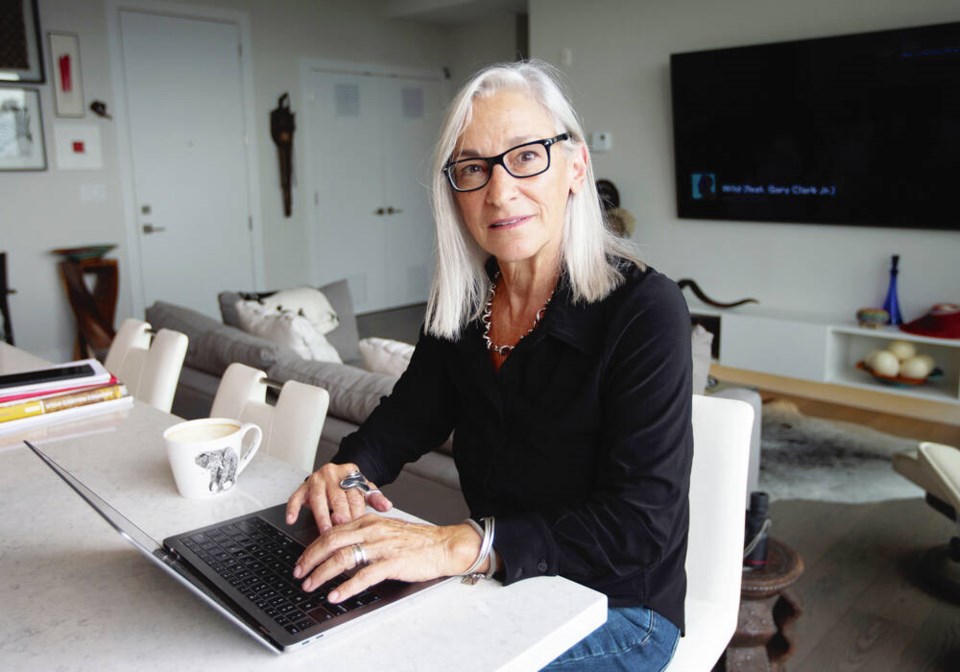It has been 11 years since Vandi Hill smoked a cigarette, but the Esquimalt woman is the perfect candidate for sa╣·╝╩┤½├Į’s new lung cancer screening program. That is, if she can get a doctor to agree to analyze the results.
The cancer screening service is one of several offered by the province — including breast, cervix and colon screening — but lung and breast cancer screenings require patients be attached to a physician first, a tall order for the 900,000 British Columbians without a family doctor.
Hill moved to sa╣·╝╩┤½├Į from Toronto a year and a half ago, and found — like both long-time residents and new arrivals — that she couldn’t secure a doctor. That was mostly an inconvenience, until 63-year-old Hill, who had smoked for about 30 years of her life, wanted to access sa╣·╝╩┤½├Į’s new province-wide lung screening program, which launched in late May at 36 sites.
The screening program uses low-dose computed tomography (CT) scans and aims to detect lung cancer at an early stage in high-risk people.
But Hill said that when she called the program number, she was told she could not proceed with a consultation until she had a physician sign off on receiving her test results.
“I’d never faced the issue because I hadn’t needed medical assistance [in sa╣·╝╩┤½├Į] up until this point,” she said.
“All of a sudden, something is being launched, which is fabulous, and I’m supposed to be able to take advantage of it.
“But because of this situation in the system, it’s not happening. And they are the system, so they should be fixing that. It’s a real Catch-22.”
A patient who wants to go through the lung-screening program must have a doctor or nurse practitioner or walk-in clinic to which they are attached “to ensure that the health professional has permission to review the results, and to manage the patient in the event of an abnormal screen result,” said the provincial health authority.
About 10 per cent of all screenings are abnormal and require further follow up, including treatment for any incidental findings noted on the CT scan.
Hill could go to a walk-in clinic, but those doctors, often overwhelmed with walk-in patients, can refuse her request. Additionally, recent data from medical clinic directory Medimap showed that Victorians spend an average 161 minutes waiting to see a physicians at walk-in clinics, the longest average wait in sa╣·╝╩┤½├Į.
As a recent retiree, Hill said she would take the time to find a walk-in doctor and complete the process, but she wondered if the physician requirement will halt the screening process for many.
About 100,000 people in the South Island are without a doctor.
“To say that somebody needs a walk-in clinic in order to get cancer screening, that’s a huge barrier,” said Greater Victoria physician Dr. Jennifer Lush.
“Cancer screening is important, but it belongs in the context of a caring, family physician-patient relationship.
“Moreover, if their cancer screening leads to diagnosis, what happens to them? They don’t have a caring family physician to walk them through the next steps.”
Lush suggested that many people won’t even know they are eligible for cancer screenings without recommendations from a doctor.
“Right now, patients are left on their own to figure out, ‘which cancer screening appointment am I supposed to be booking right now?’ ” she said.
“That’s not something they have the medical training to do. So their health care is being put at risk.”
To Lush, cancer screening is another piece of the healthcare system suffering under the physician shortage.
“Family medicine is the foundation of the healthcare system, so if that foundation is crumbling the whole building falls apart,” she said.
“There’s so many areas of crisis in the health care system because we don’t have that co-ordinated, underpinning approach.”
Seven people die of lung cancer every day in sa╣·╝╩┤½├Į, with 70 per cent of all cases diagnosed at an advanced stage.
The government expects 10,000 eligible patients will receive lung cancer screenings in the program’s first year — increasing by about 15 per cent a year to reach 20,000 patients in 2030 — and the program to annually diagnose about 150 lung cancers that wouldn’t otherwise be caught.
On Vancouver Island, screening will be done in Victoria’s two main hospitals, along with Saanich Peninsula Hospital, Cowichan District Hospital in Duncan, Nanaimo Regional General Hospital and North Island hospitals in Comox Valley and Campbell River.
The program is for people aged 55 to 74, who smoke or previously smoked or have a smoking history of 20 years or more.
The province is encouraging patients to call the Lung Screening Program at 1-877-717-5864 to complete a consultation and risk assessment to determine eligibility.
When people call sa╣·╝╩┤½├Į Cancer to book a screening, but don’t have the name of a health professional, they will be provided with the following options:
o Identify a walk-in or virtual clinic they regularly go to
o Visit the in the hopes of finding a doctor or medical clinic
o Visit , which includes links to services within the caller’s areas, such as divisions of family practice, urgent and primary care centres and walk-in clinics.
